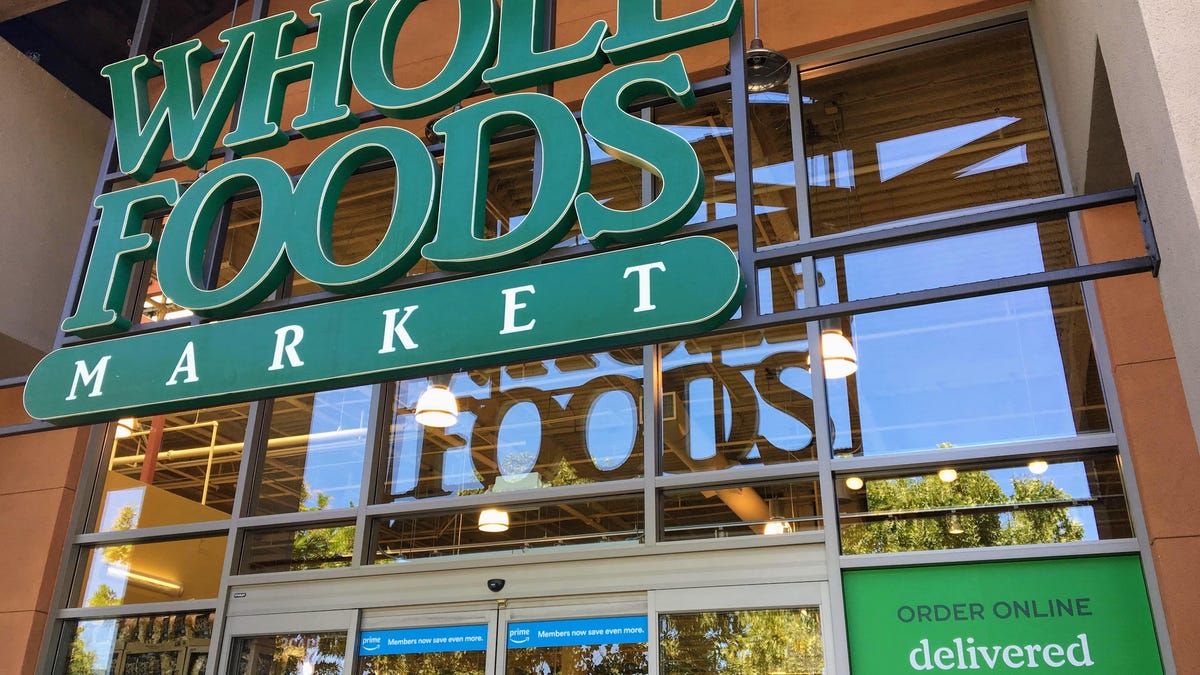How to save money at Whole Foods: 10 tips and tricks
Most of these work for other grocery stores, too.

Tips for saving money at Whole Foods are mostly transferable to other grocery stores, too.
Whole Foods has long been notorious for its high prices, earning it that well-worn nickname "Whole Paycheck" (do people still call it that?). Looking for deals at Whole Foods may sometimes feel like a fool's errand, but it is possible to get a week's worth of groceries for way cheaper than expected.
Let's look at how you can do it, even if you don't live in one of the top affordable cities to buy groceries.
Read: These kitchen gadgets help fight food waste and save money
1. Skip premade items, and get their ingredients instead
Zoodles, those slices of zucchini that look like noodles, cost about $6 a box when you buy them premade from Whole Foods. If you buy a spiralizer, it pays for itself in just a few uses, and the zucchini only runs about $1 each (one zucchini is about one serving of Zoodles).
You'll enjoy similar savings by making your own sweet potato noodles, squash noodles and more. Plus, this rule, like #2 and many others on this list, also holds true for almost any other store where you shop!
2. Visiting the bulk section is a smart move
You can get more than trail mix in the bulk aisle. If one box of pasta or bag of grains is too much, you can save money by just buying what you need for tonight's dinner.
You can buy tiny amounts of spices so they don't go stale. You can get ingredients to make your own granola. You can even buy nuts to grind your own nut butters, which is great because almond butter can get pretty pricey (and homemade Nutella is far better for you, not to mention tastier).
3. Buying frozen veggies instead of fresh
It would be great if everyone could buy fresh produce all the time, but did you know that vegetables lose their nutrients as they age? Getting a bag of mixed frozen vegetables can cost less than buying them individually, and there's no risk of spoilage or money wasted.
4. Try to always buy 365 Everyday Value
365 is Whole Foods' generic brand, like Walmart's Great Value, Kroger's Private Select or Target's Archer Farms (which is being phased out in the coming months to make way for a new line, Good & Gather). These store brand items will be at a lower price than other brands, and I have never eaten something that's worse because it's 365 (ice cream definitely included). There's even a store that only stocks 365 products in cities across the country.
Pick the 365 brand at Whole Foods to save money.
5. Ditch the sauces at the buffet
When picking up food from the hot bar and salad bar, everything is priced by weight, so you'd essentially be paying more money for some extra tikka masala sauce. Tempting, yes, but pricey, too.
6. Download the Whole Foods app
The Whole Foods app has coupons for specific stores and preferences, so you can benefit from big savings. If you're in the market for a new credit card, you can get an Amazon Rewards Visa Signature card that gives you 3% cash back from all Whole Foods purchases, too.
7. Pick meat substitutes like tofu and seitan
Whether you're vegan, trying to eat a more plant-based diet or just want to save money, you should be buying tofu, seitan, nuts and beans for plant-based protein. Some faux meat items like the Impossible Burger even "bleed" like a real burger, but if that's a little too much for you, try some jackfruit, which is increasingly available both in the canned aisle and refrigerated sections of major stores like Whole Foods.
Read more on Chowhound: What is the difference between tofu and tempeh?
8. Ask for samples of items you've never tried
Because there's truly nothing worse than buying something new and hating it, ask a Whole Foods salesperson if you can try an item before you buy. More than likely, they'll be happy to let you have a taste, and then you'll know if it's worth the money.
The pastry case is tempting, but a slice of cake can be pricey.
9. Keep your eyes on the prize
Whole Foods has so many splurge items like $5 kombuchas, $10 cold-pressed juices and crazy expensive chocolate bars. Try to focus on just the items you need. It helps to go in with a shopping list and a meal plan in mind.
10. Join Amazon Prime
While there's a bigger up-front cost for the Amazon Prime membership itself, if you can afford it, you'll get great discounts at Whole Foods (now that it's owned by Amazon). And if you don't want to venture out, you can order Whole Foods through Amazon Fresh.
This story was written by Abigail Barr and originally posted on Chowhound.

